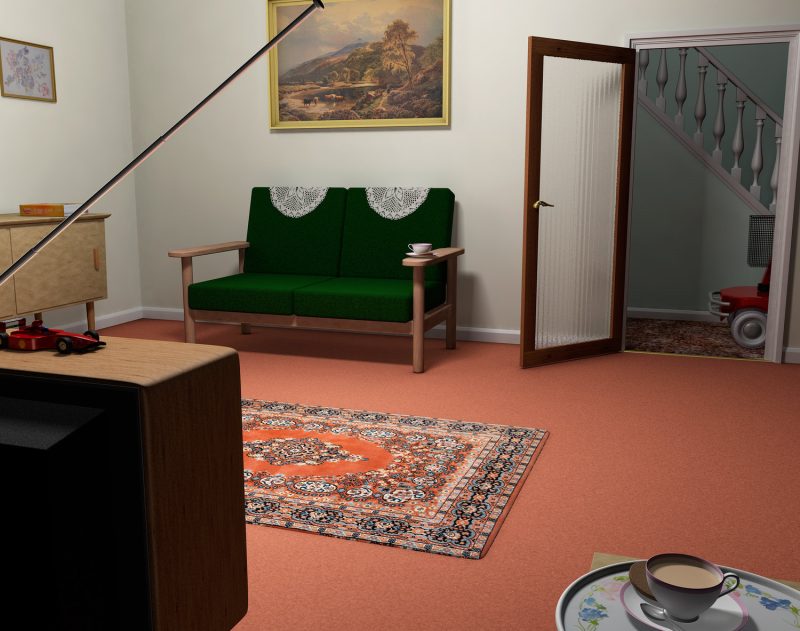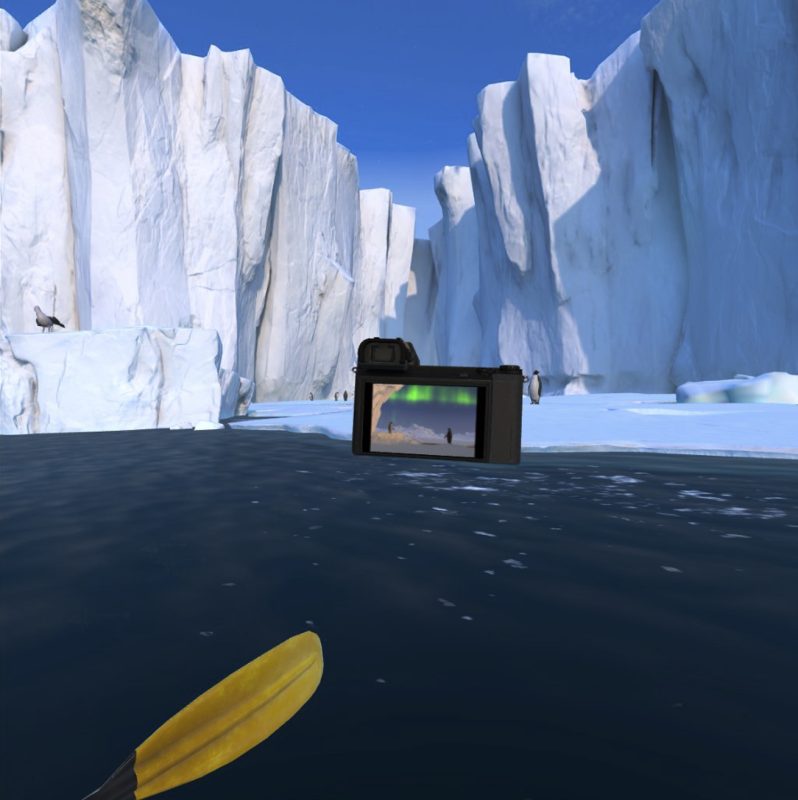08/02/2023

Dr Paula Gortázar, photography researcher and lecturer, reports on last year’s Virtual Photography Symposium and what this new area of technology could mean for the future of photography education.
Last June, Professor David Bate and I organized a Virtual Photography Symposium at the University of Westminster. This was one of the first academic events of its kind, which brought together industry experts, artists and educators from different countries in Europe and North America, to consider the future of photography within the new, virtual spaces where still images operate. Some of the speakers included Brandon Harper, Augmented Reality Designer for HoloLens at Microsoft (USA); Anders Printz, Photography Manager at IKEA (Sweden); and Petri Levälahti, gaming photographer for EA Dice (Sweden), among others.
From the discussions, it soon became evident that the operational frameworks for the production and distribution of photographs in contemporary computerized societies were shifting at a speed that neither academic research, nor photography education, were fully addressing. At this point, it is critical to clarify, firstly, what kind of photographic practices does the term Virtual Photography refer to, and most importantly, what new technological relations should be considered to fully understand the potential of the photographic medium within the emerging, virtual realm.
If one googles the term, it seems that the current, popular notion of virtual photography refers to either in-game photography practices – screen captures taken by videogame users – or to photographs taken within virtual reality applications. A broader, more inclusive conception was attributed to the term at the symposium. Coming from a variety of backgrounds (arts, education, computing and advertising), the symposium participants pointed to a number of areas that might be included under the umbrella of Virtual Photography, and which are essential to study in order to fully understand the role photography plays in contemporary societies. Such interdisciplinary knowledge would range from a basic understanding of automated forms of image production, computer vision and data capture; to creative coding, 3D scanning, computer generated imaging (CGI); or the multiple applications of photography within extended reality environments. Overall, however, what became evident throughout our discussions was that, just as digital technologies would evolve in ways that remain difficult to anticipate, Virtual Photography practices will continue to expand in unpredictable forms.

As pointed out by seminar speaker Professor Sophie Triantaphillidou (UoW), however, while it is clear that photographers should be aware of the above areas, it would be impossible to teach photography students all those subjects in depth. As she suggested, the role of educators should be to expose students – rather than teach them – the various applications of virtual photography, and provide them with the necessary tools to deepen their knowledge independently. This approach would enable students to own their learning process, encouraging them to design it according to their individual needs and motivations. After all, these areas of study are under constant development. Graduates of the twentieth-first century can expect to work in a variety of professions, across diverse sectors throughout their lives, most of which will not even exist by the time they finish University. Their ability to adapt to new technologies and embrace different ways of working and making will be essential to their career success. Educating students to design effective learning processes is thus probably one of the most important life skills Universities can teach today.

There is also already a clear growing demand for Virtual Photography skills in specific sectors. As explained for example by Ziggy Kolker, artist and Photography Lecturer at Plymouth University, the demand for Computer Generated Imaging skills in the advertising industry has been thriving for the last few years. As she recounted, however, her experience of teaching CGI raised some interesting challenges. First year photography students can be reluctant to produce computational images in the total absence of a camera, but once they start using the software and explore its endless creative possibilities, many embrace the medium and end up using it throughout their Final Projects. At the end, Kolker explained, students understand that CGI skills are not only applicable to commercial practices but that the software offers multiple opportunities for visual artists to expand their practice in innovative ways. This was also the argument offered by another symposium participant, Arieh Frosh, Digital Producer at The Photographers’ Gallery in London, who shared some of the latest projects the Gallery had been working on. All of the examples shared include Virtual Photography practices in one form or another, such as their recent exhibition Omoiyari, by the Japanese Keiken X Gabriel Massan, which was their first attempt to produce a show entirely in Augmented Reality.

A popular speaker with students at the event was Petri Levälahti, gaming photographer for video game developer EA Dice. Petri, who flew from Stockholm to share his practice, explained how his love for videogames got him started in Virtual Photography. While in the early days, gamers could only take direct screenshots of the game scene, he said, some developers started to incorporate virtual cameras as part of the gamer’s gear. After some time, the functions of these cameras became highly sophisticated, turning in-game photography into a genre of its own. Petri noted that in this context gamers’ passion to capture game scenes through still photographs could eventually turn into a real job. After years producing virtual photographs in his own time, Petri is now working as an in-house photographer for EA Dice, taking pictures to market their new releases. As he explained, there is clearly a growing demand for gamers with an understanding of photography conventions to join creative teams in the videogame industry. If photography students are playing games in their free time, this career path might be an ideal fit.
Likewise, Anders Printz, Photography Manager at IKEA, told us how the regular equipment used by his team members had changed considerably during the last decade, as it included all sorts of 3D scanning devices and drones that are significantly different from the usual photography gear. During a very informative talk about the state of commercial photography, he invited students to experiment with various scanning applications available for iPhone, in order to lessen the fear of big technological terms like ‘Photogrammetry’, and the apparent complexities of computational image outputs.

A great discussion was also provided by Brandon Harper, Augmented Reality Designer for HoloLens at Microsoft, who explained the diverse applications of photography within extended reality environments. Rather than the ‘death of photography’ – as some theoreticians of the medium had already predicted – the latest developments of digital technologies, and the proliferation of augmented and virtual reality platforms, have created new possibilities for image makers, who may now explore image capture processes within 360° environments (See Andrew Dewdney, Forget Photography, 2021).
Beyond the material production of virtual images, the study of Virtual Photography from a theoretical perspective also opens up a wide range of professional opportunities in the tech industries. The representational function of photography is now being relegated by its new algorithmic nature. The main purpose of the photograph is not so much to visually document reality, but to act as a data generating vehicle that achieves its mission through connectivity and external control. The combination of image literacy skills with an understanding of computer vision and data capture may therefore provide photography graduates with rare and valuable expertise. From User Experience Design (UX), to online marketing and data analysis, students could expand their career prospects in ways they might have never anticipated.
It is evident that the production and distribution of photographs has never been greater than today. The ability of the photographic image to generate revenue has grown at a fascinating speed during the last two decades, reaching profit levels that would have been impossible to imagine before the turn of the century. Photography graduates are poised to excel in the fluid professional landscape of the coming decades. Of course, photography education should go beyond mere practical training. The university sector has a responsibility to enlighten students in the risks of such growth, its social and political effects, and to produce critical thinkers able to contest the abuses of the system. A holistic study of Virtual Photography, from its computational roots, to its practical applications and contextual grounding, is likely to produce a new generation of photography graduates that are technically savvy, yet socially responsible, and which may thus contribute to the continuity of photography’s expansion in the virtual realm from a humanistic and ethical perspective.
It is in this spirit that photography academics at Westminster School of Art and CREAM are developing our curricula and research agendas. We aim to contribute to the progress of photographic theory and practice in ways that are yet to be devised.
Dr. Paula Gortázar has been awarded a Pilot Grant by Westminster School of Arts to develop her ongoing research on Virtual Photography. During the last six months, she has presented her findings at various international conferences in Europe and USA, including the Photographies Conference ´Boundaries and Borders´ in Texas (September, 2022), Confoco International Photography Congress in Madrid (October, 2022) and the International Conference of Photography and Theory, ´Expanded Visualities: Photography and Emerging Technologies’, in Nicosia, Cyprus (November, 2022).